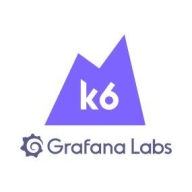

Find out what your peers are saying about Datadog, Dynatrace, New Relic and others in Application Performance Monitoring (APM) and Observability.


Apica leads in observability cost optimization, empowering IT teams to manage telemetry data economics efficiently. It supports various data types, reducing costs by 40% with flexible deployment options and eliminating tool sprawl through modular solutions.
Apica Ascent optimizes observability costs across metrics, logs, traces, and events and provides adaptability beyond proprietary formats. Its patented InstaStore™ technology ensures maximum storage efficiency and advanced root cause analysis. Organizations leverage Apica for comprehensive control over observability investments, reducing runaway costs. With solutions for mitigating high-cardinality data challenges, Apica supports any data lake preference and offers cloud or on-premises deployments. Its modular solutions eliminate unnecessary tool redundancies, enhancing economic efficiency in telemetry data management.
What features define Apica's capabilities?Apica addresses industry needs in monitoring and testing applications, enhancing user experience across sectors. It is instrumental in synthetic checks, load testing, API monitoring, and validating functionalities for stability in gaming, finance, eCommerce, and banking platforms. Apica's versatility supports both on-premises and cloud environments, ensuring accurate insights into service availability and network performance.
Load Impact offers three main features:
We monitor all Application Performance Monitoring (APM) and Observability reviews to prevent fraudulent reviews and keep review quality high. We do not post reviews by company employees or direct competitors. We validate each review for authenticity via cross-reference with LinkedIn, and personal follow-up with the reviewer when necessary.